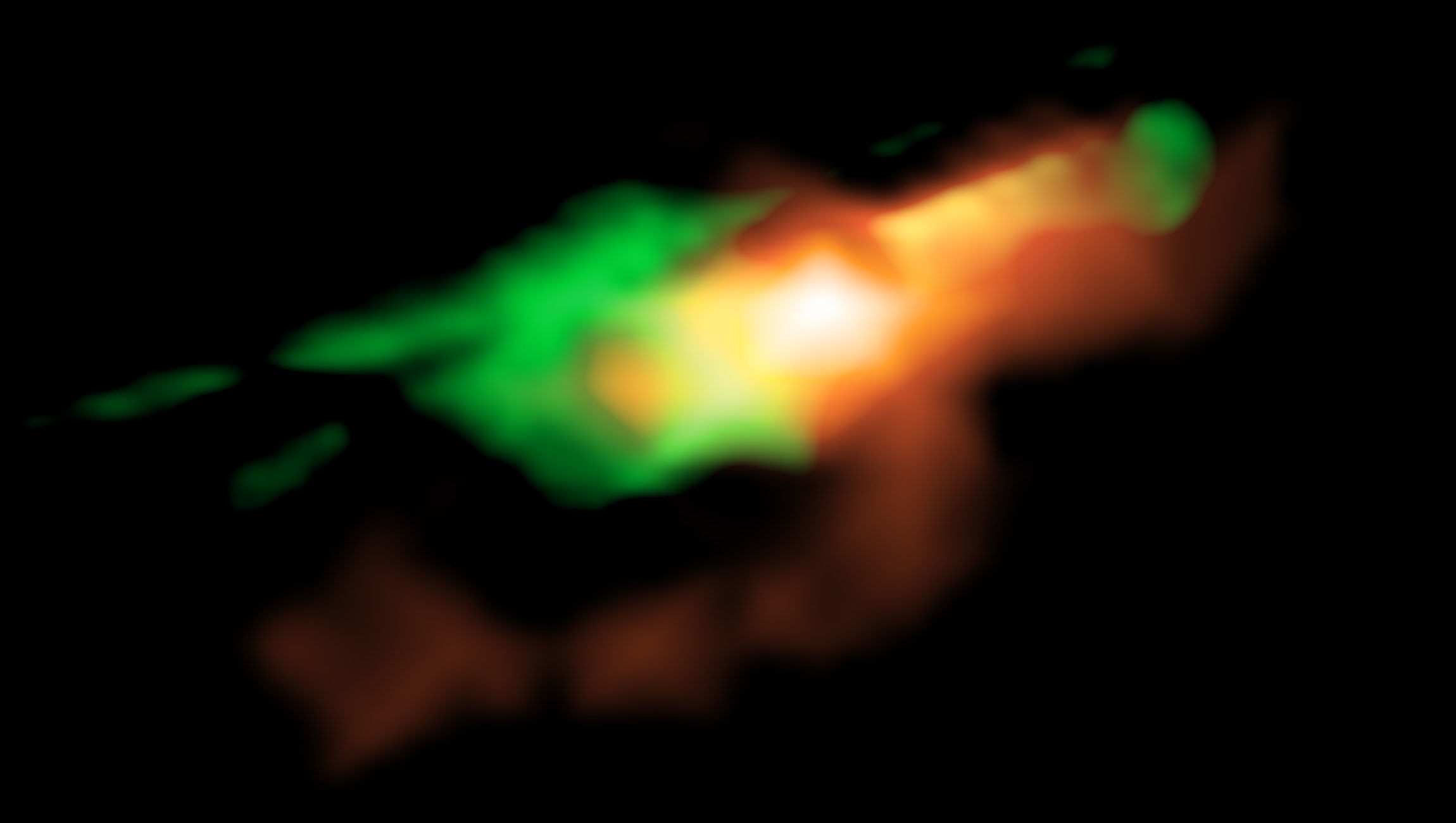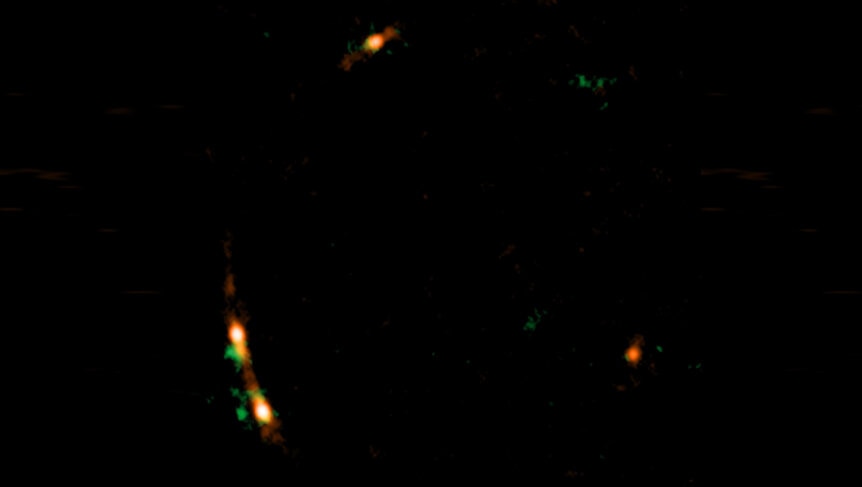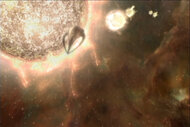Create a free profile to get unlimited access to exclusive videos, sweepstakes, and more!
This black hole blew up billions of years ago. Now it looks like four black holes

There are special effects in space—but unlike whatever goes on in movie studios on Earth, these happen on their own.
An exploded black hole observed by the ALMA (Atacama Large Millimeter/submillimeter Array) telescope 11 billion light-years away showed up more like four black holes. Behind this effect is the phenomenon of gravitational lensing. This is when the gravity of an object or galaxy between the observer and what they are observing magnifies the thing they are trying to see. In this case, it also produced something close to those trippy kaleidoscopic images that make you wonder whether you’re still in touch with reality.
“This distortion works as a ‘natural telescope’ to enable a detailed view of distant objects,” said astronomer Takeo Minezaki, an associate professor at the University of Tokyo, who was part of a research team who recently published a study in The Astrophysical Journal Letters.
When supermassive black hole MG J0414+0534, exploded, it released jets, or streams of ionized matter that zoom through the cosmos. Jets blowing through a galaxy can actually keep new stars from forming because they scatter clouds of star stuff (gas and dust) that need time to accrete into hydrogen-burning balls of fire. The jets of MG J0414 were found to push gaseous clouds as fast as 373 feet per second. That explains why many vast galaxies are way behind on star formation. ALMA’s hi-res observations gave the astronomers vision that beats human eyesight by 9,000 times, which revealed even more wonders.
You can’t argue with something 9,000 times better than human eyesight.
Going deeper, this black hole is like a visual time warp to an era of early galactic evolution. What could pass for futuristic abstract art is also unraveling mysteries about how the early universe evolved. With the super-vision of ALMA, the team of astronomers not only were able to tell how fast those jets were racing, but could also see how the gaseous clouds surrounding the jets had behaved, from how they were distributed to how they moved.
“We found telltale evidence of significant interaction between jets and gaseous clouds even in the very early evolutionary phase of jets,” said study lead Kaiki Inoue, astronomer and professor at Kindai University in Japan. "I think that our discovery will pave the way for a better understanding of the evolutionary process of galaxies in the early universe.”
What Inoue’s team observed was proof that they were seeing an embryonic galaxy as it was 11 billion years ago. This includes the high temperature and density of the host galaxy; the scattering of star stuff; the interaction of the jets with all that radiation floating around between star systems; and its unexpectedly small size. It was like peering through eons to get an idea of what our galaxy might have looked like when it first began to evolve.
If we could somehow travel faster than the speed of light and get a look at the Milky Way from that faraway galaxy, we would know what our realm looked like at birth. This is the closest we can get — for now.















